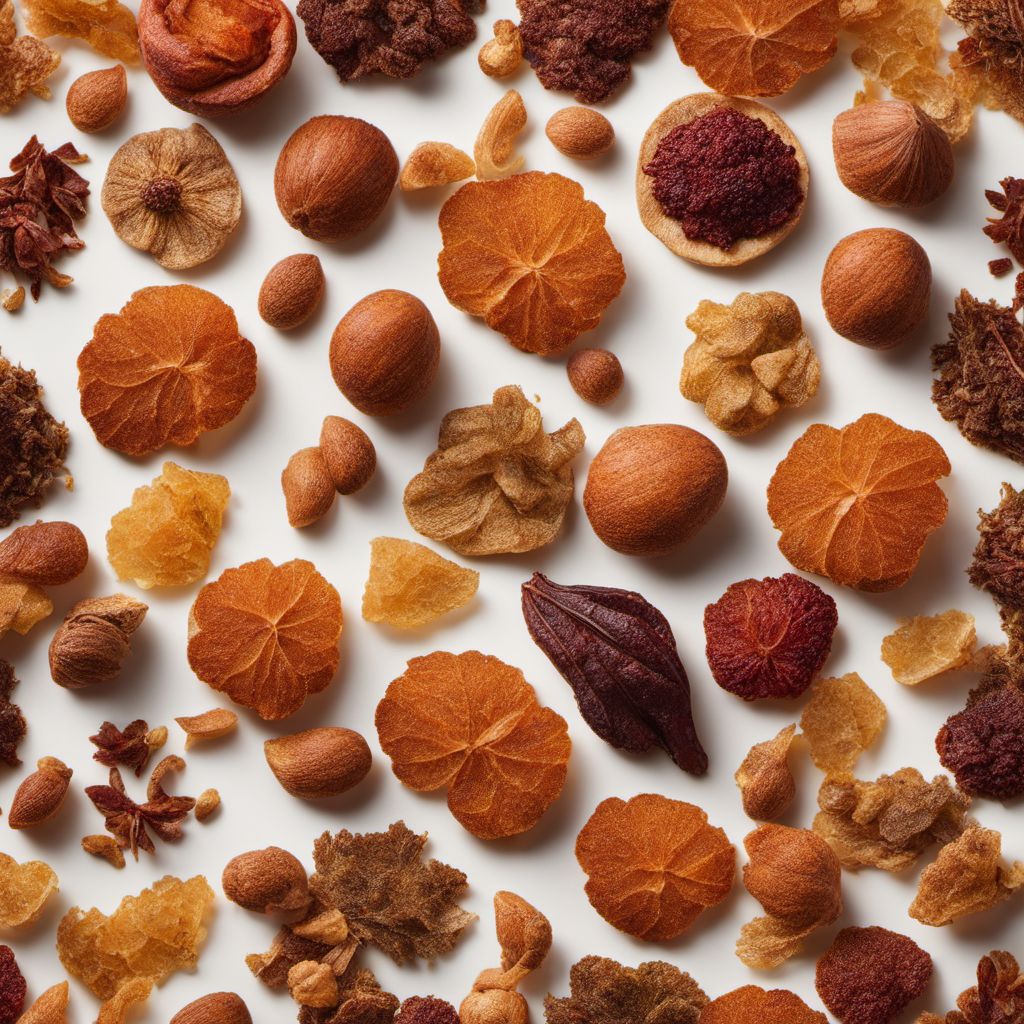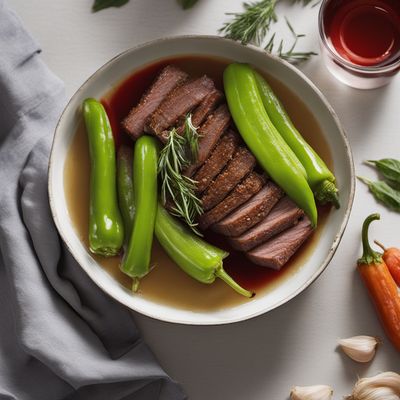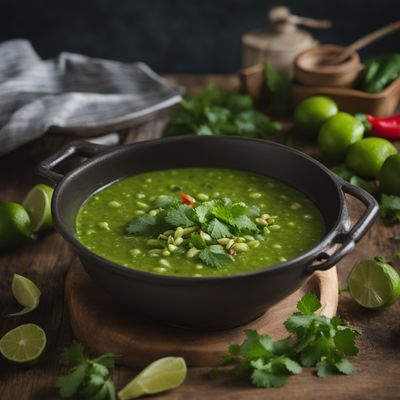
Ingredient
Dried vegetables
Preserving Nature's Bounty: Exploring the World of Dried Vegetables
Dried vegetables are vegetables that have been dehydrated to remove their moisture content, resulting in a lightweight and shelf-stable product. They retain their nutritional value and concentrated flavors, making them a practical and flavorful addition to various dishes. From dried tomatoes and mushrooms to peppers and onions, the possibilities are endless when it comes to incorporating dried vegetables into your cooking.
Origins and history
The practice of drying vegetables dates back centuries when people needed to preserve their harvest for extended periods. Drying vegetables allowed them to be stored and consumed during times of scarcity or when fresh produce was not readily available. Today, dried vegetables are enjoyed worldwide and are particularly popular in regions with limited access to fresh produce.
Nutritional information
Dried vegetables are a nutrient-dense ingredient, packed with vitamins, minerals, and dietary fiber. They provide a convenient way to incorporate vegetables into your diet, especially during seasons when fresh produce is scarce. However, it's important to note that the drying process may cause a slight loss of certain heat-sensitive nutrients, such as vitamin C.
Allergens
Dried vegetables do not typically contain allergens. However, cross-contamination may occur during processing or packaging, so individuals with specific allergies should check the packaging for any allergen warnings or consult with the manufacturer.
How to select
When selecting dried vegetables, look for products that are free from additives, preservatives, and excessive salt. Choose vegetables that are vibrant in color and have a firm texture. Avoid products that appear discolored, have a stale odor, or contain added sugars or artificial flavorings.
Storage recommendations
To maintain the quality and freshness of dried vegetables, store them in airtight containers in a cool, dark place. Keep them away from moisture, heat, and direct sunlight, as these factors can degrade the quality and flavor of the vegetables. Properly stored dried vegetables can last for several months to a year.
How to produce
Growing and drying your own vegetables can be a rewarding experience. To produce dried vegetables, start by selecting fresh and ripe vegetables. Wash and slice them into uniform pieces, then arrange them on drying racks or trays. Place the racks in a well-ventilated area or use a food dehydrator to remove the moisture. Follow specific drying instructions for each vegetable, as drying times may vary. Once fully dried, store the vegetables in airtight containers in a cool, dry place.
Preparation tips
Dried vegetables can be rehydrated by soaking them in warm water or broth for a few minutes until they become plump and tender. They can then be used in soups, stews, sauces, or as a flavorful addition to salads, rice dishes, and pasta. Alternatively, you can add dried vegetables directly to recipes that require longer cooking times, allowing them to rehydrate and infuse the dish with their concentrated flavors.
Substitutions
Fresh vegetables can be used as a substitute for dried vegetables, but keep in mind that the texture and flavor may differ. Adjust the cooking time accordingly to ensure the vegetables are cooked to the desired tenderness. Additionally, you can use vegetable bouillon or stock as a substitute for dried vegetables in recipes that require a concentrated vegetable flavor.
Culinary uses
Dried vegetables are widely used in soups, stews, sauces, and casseroles, where they add depth and complexity to the dish. They can also be ground into powders or flakes and used as seasonings or flavor enhancers. Dried tomatoes are commonly used in pasta dishes and salads, while dried mushrooms are prized for their umami-rich flavor in various cuisines.
Availability
Dried vegetables are available in most grocery stores, health food stores, and online retailers. They are commonly found in the dried goods section or the bulk aisle. Additionally, specialty stores or farmers markets may offer a wider variety of dried vegetables.
More ingredients from this category
Recipes using Dried vegetables

Molecular Gastronomy Couscous
Couscous Reimagined: A Molecular Gastronomy Delight

Italian-style Pierogi
Pierogi Italiano: A Fusion of Polish and Italian Flavors

Balearic-style Roast Chicken
Mediterranean Delight: Balearic-style Roast Chicken

Authentic Pasilla Chile Salsa
Smoky Pasilla Delight: A Fiery Mexican Salsa

Lesso e Pearà with a Twist
Savory Italian Beef Stew with Velvety Pepper Sauce

General Tso's Chicken
Crispy General Tso's Chicken with a Sweet and Spicy Sauce

Esse di Raveo with Tomato Basil Sauce
Savory Spinach and Ricotta Stuffed Pasta with Fresh Tomato Basil Sauce

Crispy Roasted Guinea Pig
Carmarthenshire Delight: Crispy Roasted Guinea Pig with Local Herbs

Afghan-style Green Pozole
Savory Afghan Green Pozole: A Fusion of Flavors
